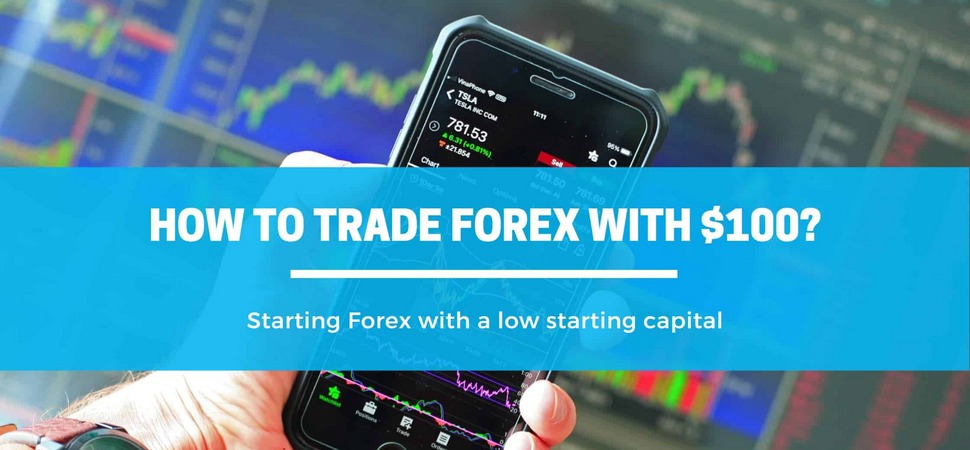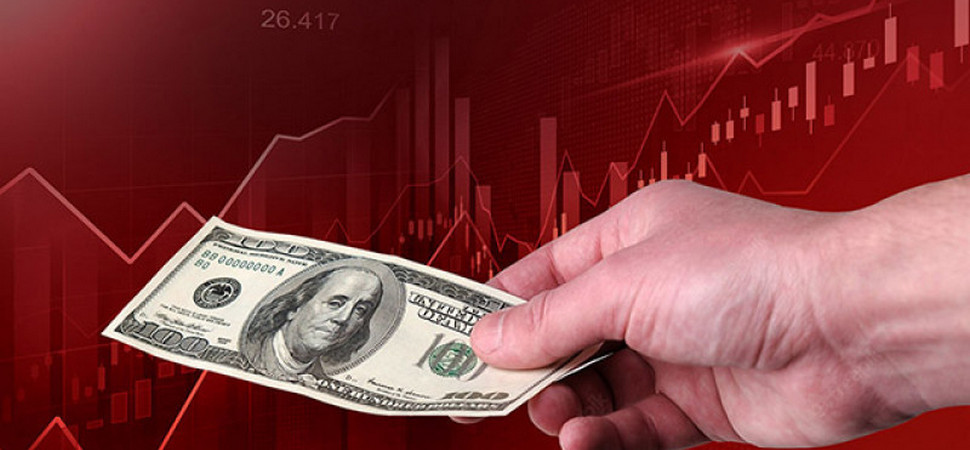09.10
Share ArticleIs $100 enough to start trading forex? Find out in this comprehensive guide. Part III
And so in the last part of our guide - Forex Almanac, you learned about the possibility to start trading with $100 capital, as well as the risks of small capital and the choice of the right strategy. But this is all theory, but what about real life examples? - You will learn about them in this big, but not the last, part of our joint immersion into the world of Forex.
Section 6: Real-Life Experiences of Forex Traders
Examining the journeys of real Forex traders who started with a small initial capital can provide invaluable insights into the realities of this investment path. Their experiences, challenges, and triumphs serve as practical lessons for aspirants planning to start trading with a modest sum of $100.
Stories of Successful Forex Traders
Take the example of Richard Olsen, for instance. He began his Forex trading journey with less than $200, and through careful investment strategies, he managed to amass significant returns over time. Olsen's strategy relied heavily on understanding market trends and making calculated decisions, rather than impulsive trades.
Another inspiring story is that of Bill Lipschitz, dubbed the "Sultan of Currencies." Lipschitz started trading during his college years, turning an inheritance of approximately $12,000 into millions. His secret? A disciplined approach to risk management and a laser focus on the bigger picture in the volatile Forex market.
Challenges Encountered and Overcoming Them
However, it's important to note that success in Forex trading didn't come easy for these individuals. Both Olsen and Lipschitz faced numerous challenges along their journeys. For Olsen, one of the biggest struggles was maintaining patience and resisting the urge to make hasty trades based on temporary market fluctuations. He overcame this by adopting a long-term perspective, focusing on overall market trends rather than short-term changes.
Lipschitz, on the other hand, emphasizes the importance of risk management in overcoming trading challenges. In his early trading days, he suffered a significant loss, which taught him the importance of managing risk. From then on, he never risked more than 1% of his account on a single trade, a practice he attributes largely to his overall success.
Lessons from Real-Life Experiences
The experiences of these traders underscore some key lessons for those beginning their Forex trading journey with $100. First, patience and discipline are crucial. Forex trading is not a get-rich-quick scheme, but a long-term investment that requires consistent effort, analysis, and patience.
Second, risk management is non-negotiable. As Lipschitz's story highlights, even the most experienced traders can face significant losses. Therefore, it's essential to set a limit on how much you're willing to risk per trade.
Lastly, continuous learning is vital. The Forex market is a complex, ever-changing landscape, and staying updated with market trends, economic indicators, and financial news can greatly enhance your trading decisions.
Remember, every trader's journey is unique and shaped by individual goals, risk tolerance, and investment strategy. While $100 may seem like a small sum, with patience, discipline, and the right approach, it can serve as an effective stepping stone into the world of Forex trading.
Section 7: Tools and Resources for Forex Trading
In the world of Forex trading, having the right tools at your disposal can be the difference between a successful trade and a catastrophic loss. A myriad of platforms and resources are available to traders, with each offering unique features catered to different styles of trading. In this section, we'll review some popular Forex trading platforms and provide insights into how you can use these tools effectively for trading.
Popular Forex Trading Platforms
The first component of any trader's toolkit is their trading platform. MetaTrader 4 (MT4) and MetaTrader 5 (MT5) are two of the most widely-used platforms in Forex trading. These platforms provide traders with real-time price feeds, advanced charting tools, and a host of technical indicators. They also support automated trading via Expert Advisors (EAs), which can be a great help for beginners and seasoned traders alike.
Another popular choice is cTrader, a platform known for its intuitive design and robust functionality. It offers Level II Pricing, fast entry and execution, and supports algorithmic trading. For those who prefer a cloud-based platform, Trading View stands out with its powerful charting capabilities and a broad social network of traders to share ideas and strategies.
Effectively Using Trading Tools
Having the right platform is just the starting point. Understanding how to make the most of the tools your platform provides is crucial. Here are some tips for effective tool utilization:
Understand Technical Indicators: Most platforms offer a range of technical indicators like Moving Averages, Bollinger Bands, RSI, and Fibonacci retracement levels. Understanding what these indicators mean and how to use them can significantly improve your analysis and decision-making process.
Use Charts: Platforms like MT4 and Trading View offer advanced charting tools. These can be used to identify trends, recognize patterns and make predictions about future price movements. It's essential to familiarize yourself with different types of charts (e.g., candlestick, bar, and line charts) and learn how to interpret them.
Practice Risk Management: Many platforms provide features that help traders manage their risks effectively. These include stop-loss orders, take-profit orders, and trailing stops. Using these tools correctly can help protect your capital from extreme market volatility.
Beyond individual trading platforms, there are other resources that Forex traders can use to enhance their trading strategies. Economic calendars, for example, provide information on upcoming economic events that could potentially impact currency prices. News feeds are another crucial resource, providing real-time news updates that could affect the Forex market. Lastly, many brokers offer educational resources, including webinars, e-books, and tutorials, which can be particularly useful for beginner traders.
In the end, it's not just about having the right tools—it's about knowing how to use them. By understanding your platform and using the resources available, you can improve your trading skills and, hopefully, your profitability in the Forex market.
Section 8: Tips for Forex Trading with $100
In this section, we are going to provide actionable tips for those who are planning to commence Forex trading with a modest capital of $100. Furthermore, we'll delve into common pitfalls that beginners should be wary of to avoid unnecessary losses.
Practical Tips for Starting Forex Trading with $100
To start off, it's crucial to adopt a disciplined approach towards Forex trading, especially when you're dealing with a smaller capital. Don't let the relatively small amount breed complacency; remember that every dollar counts.
Firstly, consider choosing a reputable broker that offers a high leverage ratio. This can significantly enhance your trading capacity despite having a smaller initial capital. However, be mindful that higher leverage also means higher risk potential, so use this tool wisely.
Secondly, focus on stable and highly liquid currency pairs, such as EUR/USD or USD/JPY. These pairs tend to have tighter spreads and are less volatile, making them more suitable for beginners. In contrast, exotic currency pairs might offer higher profits, but they come with greater risk and may quickly deplete your $100 capital.
Lastly, always stick to your trading strategy and avoid emotional trading. It's easy to get carried away by market fluctuations, but impulsive decisions often lead to losses. Having a clear plan and sticking to it consistently is key in Forex trading.
Common Pitfalls to Avoid
Now, let's discuss some common mistakes that beginner Forex traders should avoid. One of the most typical pitfalls is overtrading. With a $100 capital, it's crucial to limit your trades and avoid overexposure. Overtrading can lead to significant losses and deplete your capital quickly.
Another common pitfall is neglecting risk management. It's essential to set stop-loss orders and limit orders for every trade. This way, you can control potential losses and ensure that a single trade doesn't wipe out your entire capital.
Lastly, avoid the mistake of chasing losses. If a trade goes wrong, it's better to accept the loss and move on, rather than trying to recoup it immediately with another trade. Chasing losses often results in poor decisions and increased risk.
In essence, starting Forex trading with $100 isn't just about maximizing profits; it's also about minimizing losses and managing risks effectively. Remember, success in Forex trading isn't achieved overnight. It requires patience, discipline, and continuous learning. So be sure to read our article to the end, in the final part you will learn about fraud in the Forex market and how to avoid it, as well as summarize and draw conclusions whether it is worth it to start trading with $100?
Continued next…
Link to Part 1 https://http://euro-economy.com//en/useful-information/is-100-enough-to-start-forex-trading
Link to Part 2 https://http://euro-economy.com//en/useful-information/how-to-minimise-risks-and-choose-a-successful-strategy
Link to Part 4 https://http://euro-economy.com//en/useful-information/what-do-i-need-to-know-about-ethics-and-fraud


Reviews